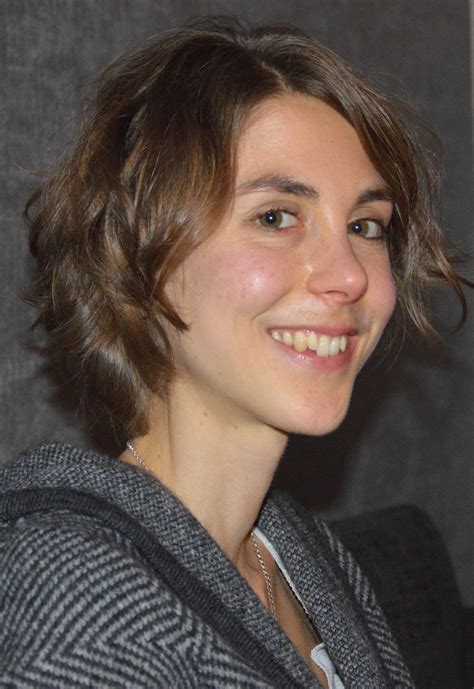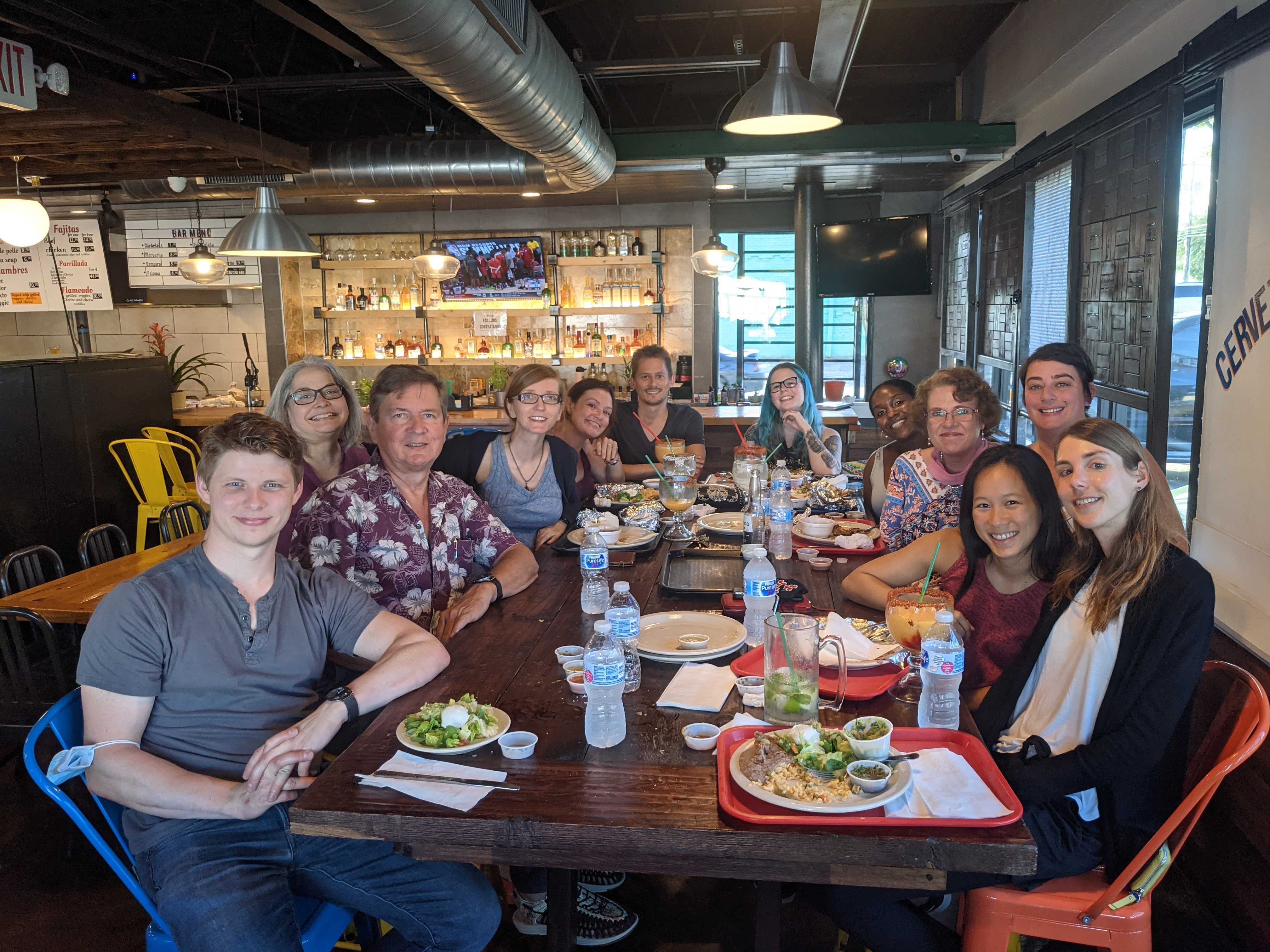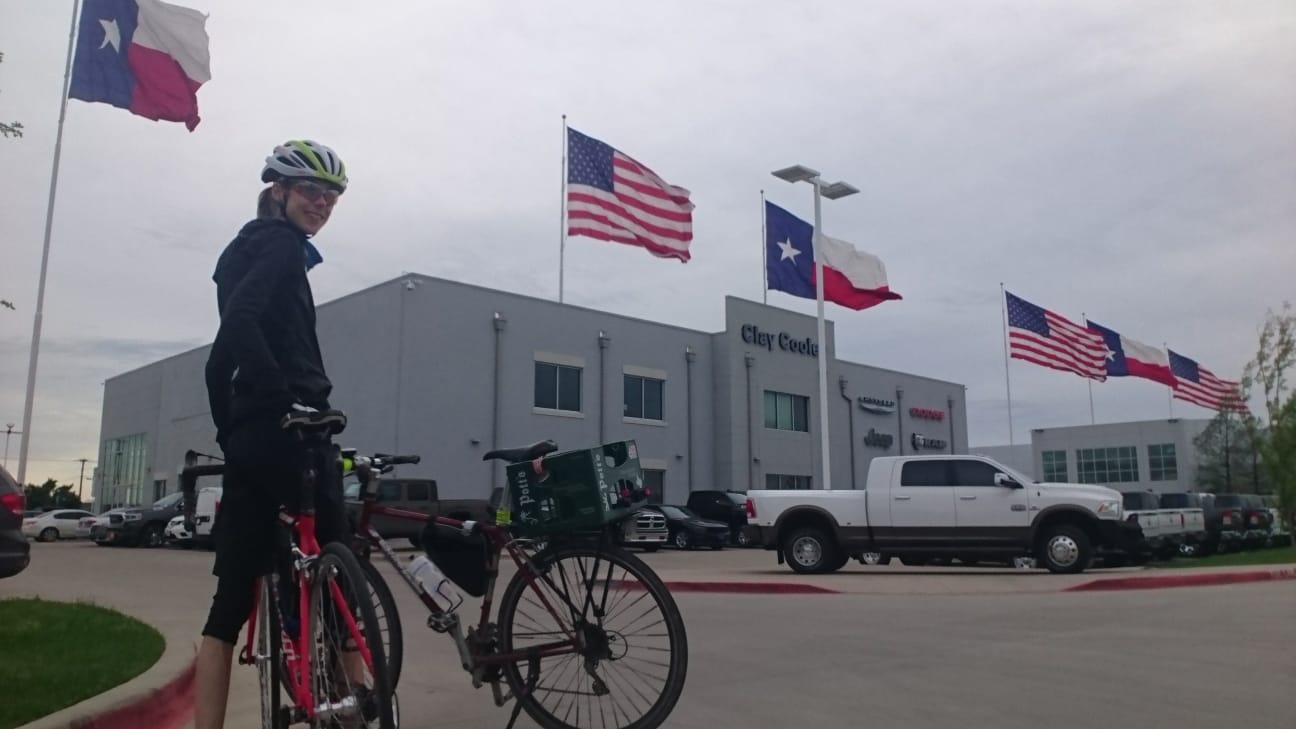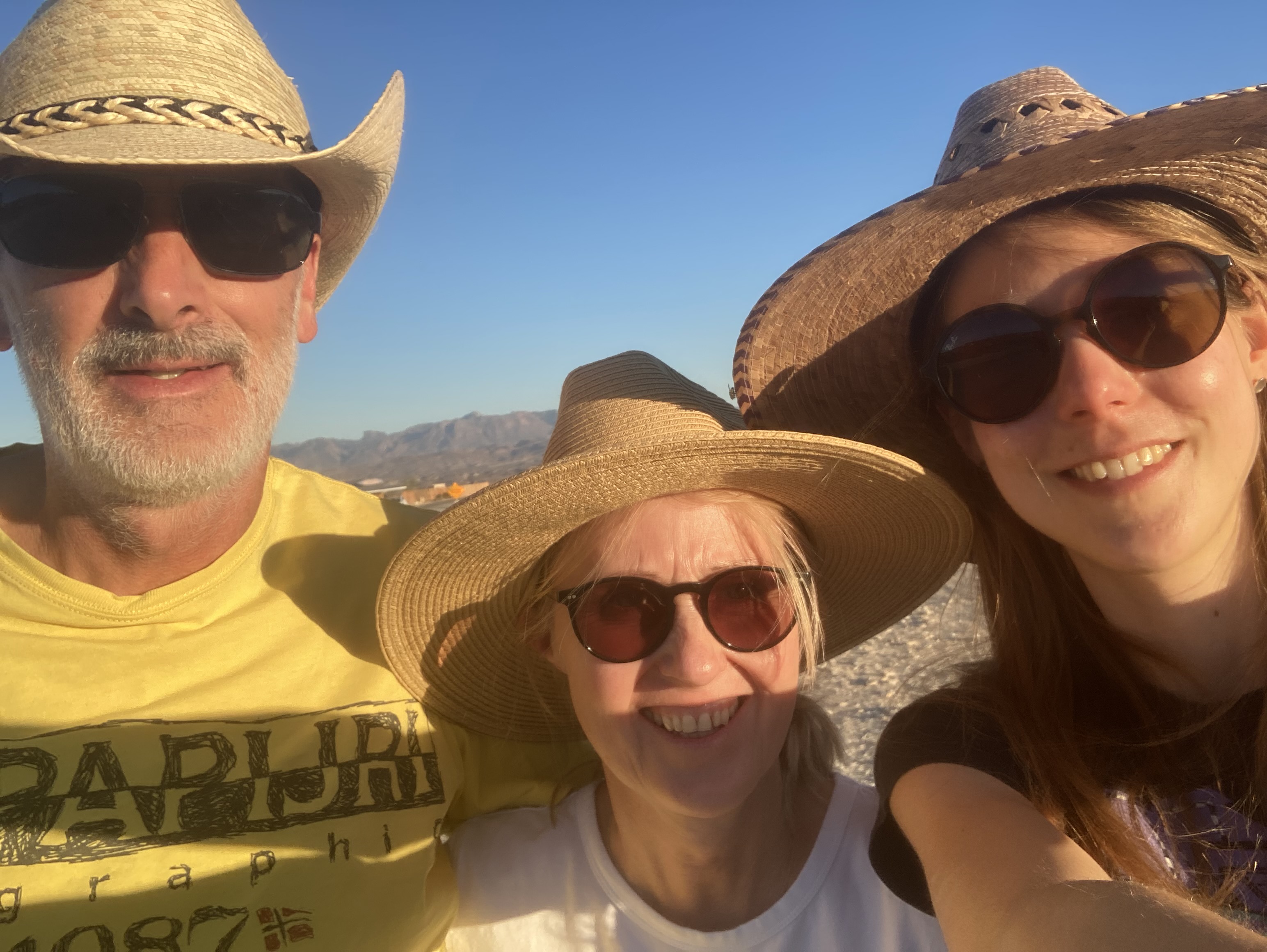“Been in America”: Interviews with German researchers in the USA and Canada

Dr. Kristina Kuhbandner
© Privat
(12/17/21) Through its research fellowship program and through the Walter Benjamin Program, the DFG supports early career researchers in their academic careers by funding an independent research project abroad (and since 2019 in Germany, too). A large proportion of these fellowships are awarded for research in the USA and (to a lesser extent) in Canada, reflecting the belief still prevalent in many disciplines – and in the life sciences in particular – that for a career in research it is helpful to have “been in America”. In this series of talks, we aim to give you an impression of the range of DFG funding recipients. Let’s take a look at who is behind funding number KU 4036.
DFG: Dr. Kuhbandner, many thanks for taking the time to talk to us. Let’s go back a little in your biography and look at when it was that you more or less decided to pursue a career in the life sciences. You attended the secondary school Maria-Ward-Gymnasium in Nuremberg, a Catholic girls’ grammar school which was more oriented towards the social sciences. There you did an excellent school-leaving exam, so you had “plenty of options,” as they say. But you didn’t go on to study clinical medicine, as one might have expected, and opted for molecular medicine instead. How did that come about?
Kristina Kuhbandner (KK): It’s a bit of a convoluted story, but let me first say a big thank you to the DFG for supporting my career as a researcher here in the US. Many thanks too for supporting me beforehand when I was doing my doctorate, as part of Research Training Group 2162 “Neurodevelopment and Vulnerability of the Central Nervous System” at the University of Erlangen-Nuremberg. I’d also like to thank the DFG’s North American office for taking an interest in me and my career. As one of the many thousands of postdocs – together with the even larger number of PhD students – who keep research running all over the world, 60-hour weeks tend to be more common than interview requests.
Now back to those convolutions and how I was influenced by my family background. Unfortunately, there seems to have been a little less mathematics and physics in my genes than I would have liked as the daughter of a mechanical engineer and an accountant, but my affinity for biology made up for this. That and my school’s great commitment to social issues resulted in internships in the field of geriatric and childcare -- so even at that stage there was a great proximity to people and patients, enough for me to realize that life science research would suit me better than working at a hospital, i.e. in direct contact with patients.
DFG: How did you end up going to Maria-Ward-Gymnasium – a school with rigorous admission requirements and not the closest secondary school to your home town of Kalchreuth?
KK: No, it wasn’t the closest, but it is a very good school – something I was aware of even at the tender age of ten. It also had other advantages. Some of my friends from primary school went there too, for example; also, it was an all-girls school and I have a brother who is two years younger.
DFG: But he took it okay, right?
KK: Absolutely, you don’t have to worry about him. He followed in our father’s footsteps and works as an engineer with Siemens – not a mechanical engineer in the healthcare sector, but an energy process engineer with Siemens Energy.
DFG: Should we be worried about you in any way? After all, you’re not just anywhere in North America on a DFG fellowship, but in Dallas, Texas – probably the most extreme contrast imaginable to Kalchreuth, which is best known for its cherry blossoms.
KK (laughs): Yes, assimilation-wise I really ought to have bought a pick-up truck with at least eight cylinders, fat lugged tyres and insane fuel consumption. The truck would have a shotgun hanging in the truck, and I’d sit down to a 24-ounce T-bone in a steakhouse every day wearing my cowboy hat. In reality I’m a vegetarian and ride a bicycle – though back roads and a crash helmet do offer some protection from the trucks. Besides, I wouldn’t even know how a shotgun works. But there really is no need to worry about me. I get around very well by bike here on the campus of the University of Texas Southwestern Medical Center. There’s plenty of fresh and exotic fruit and vegetables to buy – most of which comes directly from Mexico – and there’s no real need for firearms in everyday life. Mind you, I do now own a cowboy hat.

Joachim Herz’s group
© Privat
DFG: It sounds like there might be some pretty weighty reasons not to be in Dallas from your point of view – so what are the reasons in favor?
KK: Actually, I’m very close to home. I had my very first contacts in the USA during my doctorate -- even then I knew that at some point I’d need to take the plunge and go out into the world for a while. Professor Joachim Herz’s group and the environment here at the Medical Center are the main reasons I ended up here. Professor Herz is one of the world’s leading researchers in the field of neurodegenerative diseases such as Alzheimer’s, multiple sclerosis and the related disease amyotrophic lateral sclerosis (ALS) – also known as Lou Gehrig’s syndrome. This is a truly insidious illness for which there is no cure yet and no known medical options to significantly slow its progression. It mainly affects people at the middle stage of life: currently they only survive the diagnosis for three to five years. Promising approaches to a better understanding of the disease are based on nicotinamide adenine dinucleotide (NAD), an enzyme central to numerous metabolic functions in the body, or more precisely a coenzyme. A reduction in this coenzyme is not only found during physiological ageing processes; it’s something that also seems to play a key role in various neurodegenerative diseases. With the help of a gene therapy approach using mouse models, we’re investigating whether there could be effective interventions to halt this process.
DFG: You work with mice yet you’re a vegetarian. How do you reconcile that
KK: It's not totally satisfying to be honest – that’s an interesting dilemma you raise. There are many things in life science research that you can only study with living models. With other common models such as C-elegans, zebrafish and the fruit fly – where establishing an emotional relationship is somewhat more difficult – the underlying conflict is mitigated to some extent, but qualitatively it remains the same. It would be much better if we could examine everything in silico, i.e. on a virtual organism on a computer, or at least in vitro, i.e. using cell agglomerations in a Petri dish. We’ve made good progress in this area in recent years and will certainly make great strides in the future. But if your research is directed towards human beings, you ultimately can’t avoid animal experiments, though always based on the motto: as little as possible and only as much as is truly necessary. There’s a comparatively strict set of regulations governing this, both in Germany and the USA. As a vegetarian, I’m also intrinsically motivated and don’t want animals to suffer without a good reason.

Cycling in Texas
© Privat
DFG: What is your day-to-day work routine like right now?
KK: I’m more of a morning person and before cycling to the lab I love to spend the time reading about new research in my field and writing academic articles. In the lab, you mainly do what you’ve planned beforehand, often in consultation with others in the group. You’re basically at the workbench with a pipette in hand, if you like. In the conceptually more demanding phases, I also like to go out into the fresh air: equipped with a racing bike or hiking boots, this is another great way for me to get to grips with the kind of mental blocks that are probably impossible to avoid completely. Just under three quarters of an hour by bike from campus there is White Rock Lake, for example; I love going there because you leave the city behind you entirely.
DFG: When you compare the research environments in Erlangen-Nuremberg and Dallas, what stands out in particular?
KK: First of all of course it’s the sheer size. It seems to be a typical US notion that more is better. Things seem to be more efficient in Germany, though I couldn’t produce any figures to prove it off hand. Nonetheless, no research has ever suffered from being over-resourced. The other thing that’s immediately noticeable here is the much more colourful composition of the laboratories, i.e. the international make-up of the research team – a nice reflection of the global nature of the questions we investigate.
DFG: Would another environment in North America or elsewhere in the world have been as suitable for your research project as Dallas is now?
KK: Maybe, but Dallas itself is ideal – not only because of Joseph Goldstein and Michael Brown, who were awarded the Nobel Prize for their groundbreaking discoveries in cell biology, though that’s probably one reason why Professor Herz was drawn to come here in the first place. Exceptional talent seems to attract even more exceptional talent, and for what I do, Dallas is one of the world’s top locations – despite the many car-crazy and meat-loving Texans and a very sparsely developed public transport system.

Texas trip with the parents
© Privat
DFG: Have you ever had friends or relatives from Germany visit you in Dallas and if so, what did you do with them?
KK: Yes, my family visited me recently and that’s the reason I now own a cowboy hat. My father is a real fan so we naturally took in the usual pilgrimage sites for cowboy fans, i.e. Cattle Drive and Fort Worth. But we also went to Big Bend National Park, close to the Rio Grande at the Mexican border – not by bike but by car, because the distances in Texas can be huge. The rental car clocked more than 1,000 additional miles.
DFG: Has this left such a lasting impression on you that you see your future in Texas?
KK: Despite the cowboy hat, the answer to that question is a definite ‘no’. I’m going to continue my research here in Dallas until the end of 2022 and then return home. To be honest, I’m not even sure if I want to stay in research in the long term or if I’d rather switch to science communication or science management. But that will ultimately depend on the outcome of my research and the effort involved, as well.
DFG: What would you say is the ratio between success and failure in your field?
KK: You can certainly get 90 % frustration and only 10 % joy – but that’s something you learn to deal with early on. My uncertainty has a rather different source: the career prospects in research at universities are not very promising. Here it’s often a question of all or nothing, i.e. you become a research group leader or you opt for an alternative career. It remains to be seen whether my inclination and abilities are up to taking the first of those two options.
DFG: When you go back to Germany in a good six months, what are you particularly looking forward to and what will you miss?
KK: Let’s start with what I’ll miss. I’ve made some friends here who I’ll miss, of course, and I’ll probably miss the Texas sun, the warmth during the winter months and those fabulous expansive skies, both day and night. Something I won’t miss is the huge amount of ice cubes that are automatically put into your glass. In my home country, I look forward to family, Bavarian conviviality and a landscape that’s very familiar to me. And where I come from – i.e. Erlangen, Nuremberg and the immediate surroundings – everything is on a somewhat smaller scale. I’ll be sorry to miss the cherry blossom in my home town next year – it really is worth seeing.
DFG: Albrecht Dürer probably thought so as well. Two of his works feature Kalchreuth.
KK: Yes, there are two beautiful watercolors by him – one of Kalchreuth Valley and one of the village of Kalchreuth – that date back to the late 15th century and early 16th century: neither of them show the cherry blossom, however. The village looks very different today, but the valley, the hill and in particular the cherry blossom not captured by Dürer still have enormous appeal for people who live in the surrounding area.
DFG: Returning to Dallas for a moment: have you ever run into Dirk Nowitzki there, or maybe Cliff Barnes?
KK: Of course I’ve heard of Dirk Nowitzki – or “Dörk” as he’s known here – but I never saw him during his active career with the Dallas Mavericks. A good acquaintance of mine has known him for many years and I’m sure I could get an autograph if I wanted. Who on earth is Cliff Barnes?
DFG: Cliff Barnes is an inside joke for baby boomers. He’s a character from the TV series Dallas – brother-in-law and antagonist of J.R. Ewing. Barnes has his place in the collective memory because – unlike Dirk Nowitzki – he was a bad loser.
KK (laughs): OK, that’s new to me, but I hope you’re not referring to me with that allusion (which my mother would certainly have understood, being a great fan of the series).
DFG: No, that was intended more for Dirk Nowitzki, since he initially had the Barnes stigma attached to him: despite his outstanding talent, things didn’t work out right away for him with the NBA championship. He’s a very good example of not being intimidated by setbacks, but learning from them and even being able to laugh about them. What is it that makes you laugh?
KK: I’m quite good at laughing at myself, like when I make things much more complicated than necessary, then later realise everything could have been much easier. That happens sometimes in the laboratory, too, though laughter there tends to be strictly limited to the satisfaction of gaining new insights.
DFG: If you could look into a crystal ball, what new insights would you expect to to gain in your field of research over the next 20 years?
KK: We will almost certainly make great strides in understanding neurodegenerative diseases, and possibly in developing treatments. I don’t dare to predict that we’d be able to cure ALS or MS, but we’ll probably make progress in delaying the progression of the disease, which would already be a huge success – especially in the case of ALS. In about 10% of cases of ALS where the cause can be directly traced back to mutations passed on in the family, you could speculate about promising options based on gene therapy, but in the majority of cases the causes are multi-factorial and we are still pretty much in the dark. That remains a big challenge for the moment. Genetic engineering research will certainly have a role to play in cancer treatment, too. Considering how widespread cancer is as a disease, these are themselves significant changes that could be in store for us in the coming years. I really enjoy working in this area, but as I said, I can now also imagine working in science communication or in science management to support other researchers in carrying out their work and publishing their results.
DFG: In that case, thank you very much for this informative and enjoyable interview. We hope you continue to enjoy accident-free cycling in Dallas, and we wish you all the best with your research project and your career.